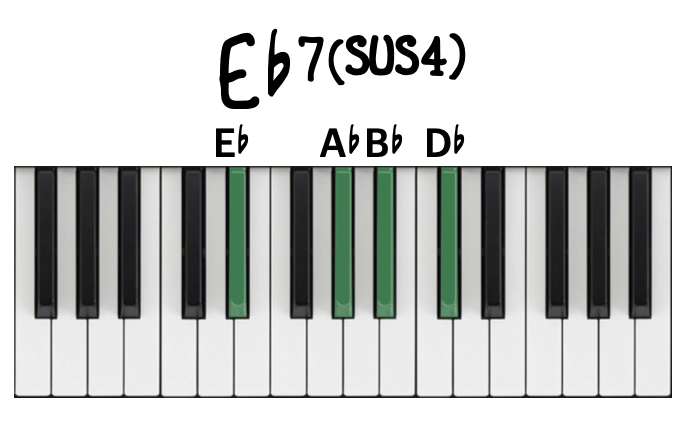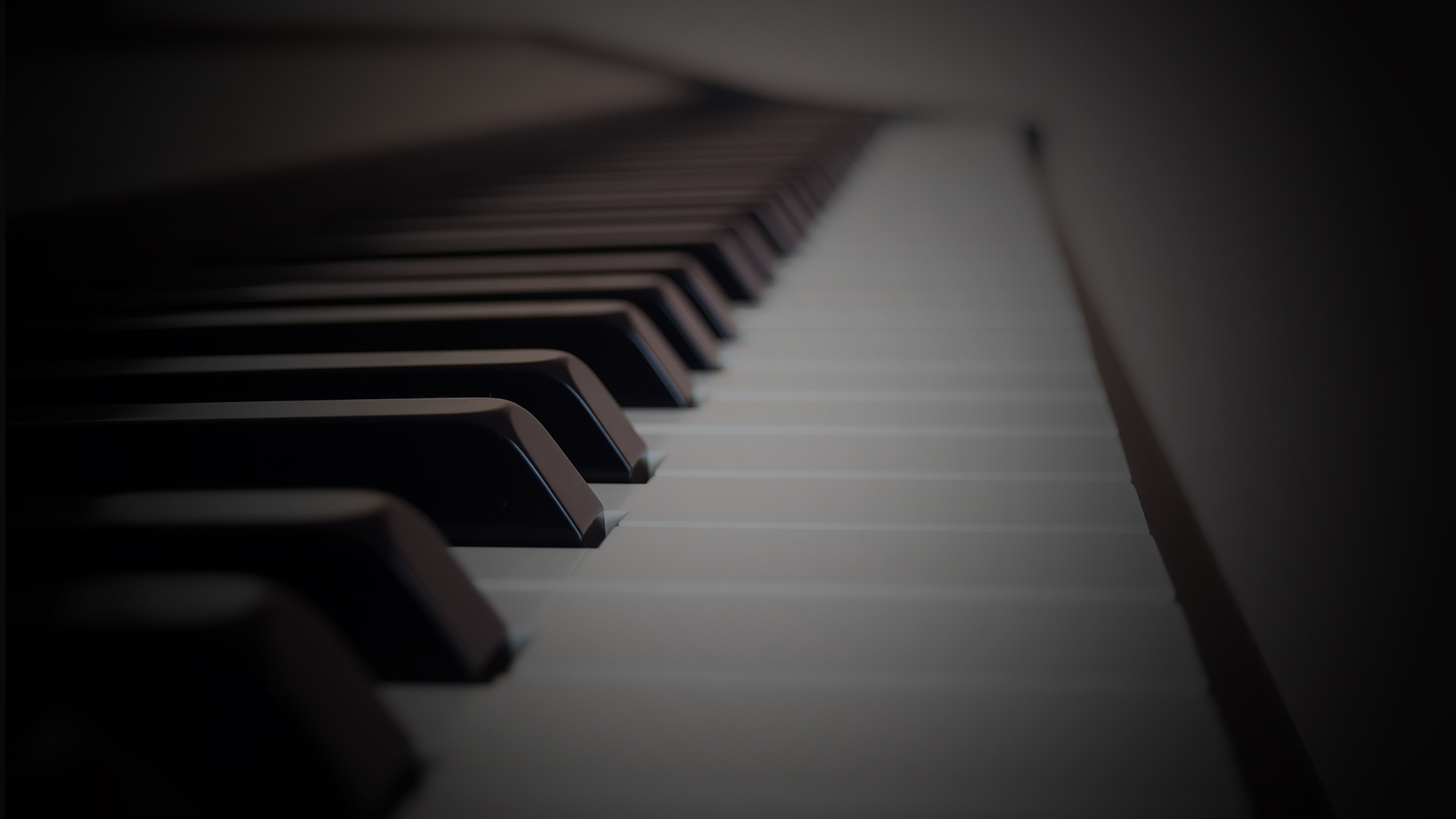Sus Chords for Piano: The Ultimate Guide
Learning Focus
Music Style
Free Lessons
Get free weekly lessons, practice tips, and downloadable resources to your inbox!
If you enjoy the sound of warm and elegant piano chords, then you absolutely must learn how to incorporate “sus chords” into your playing! In today’s Quick Tip, Sus Chords for Piano: The Ultimate Guide, Jonny May helps you discover how to understand and apply chord symbols like Csus2, Csus4 and more. In fact, your playing will sound noticeably more professional once you learn how to use the suspended chords in this lesson. You’ll learn:
- Intro to Sus Chords & Why You Need Them
- Which Chords in a Progression Can Be Sus Chords?
- 3 Ways to Use Sus Chords In Your Playing
- Advanced Sus Chords with More Than 3 Notes
- Application: Using Suspended Chords in a Song
- Piano Chord Chart of Essential Sus Chords
Intro to Sus Chords & Why You Need Them
Unless you’re a brand new piano student, you’ve probably heard of sus chords before. Nevertheless, after today’s lesson, you’ll think of sus chords with fresh possibilities. And if you haven’t heard of them, just know that there’s nothing to be suspicious of here. That’s because “sus” is short for suspended…more on that in a bit. But first, let’s listen to a sample chord progression with and without sus chords.
First, here is a chord progression that only uses basic piano chords called triads.
Basic Progression

Now, here’s the same exact chord progression, except this time each of the chord changes includes one or more sus chords.
Same Progression with Sus Chords

Now that you’ve heard how beautiful these chords sound, let’s look at a definition of sus chords and determine how to construct them.
What are sus chords?
In music theory, sus chords (aka “suspended chords”) are a special type of chord construction in which the 3rd is replaced by either the 4th or the 2nd. Consequently, sus chords are described as having ambiguous, “floating” sonic characteristics that are neither major nor minor.
In baroque and classical music, sus chords typically occur as the result of a melodic ornamentation technique known as a suspension, in which the interval of a 4th or a 2nd above the root behaves as a non-harmonic tone that resolves to the 3rd of the chord after a brief delay. However, in modern musical styles, sus chords don’t always follow such traditional conventions.
The most basic types of suspended chord have just three notes—such as sus4 chords and sus2 chords.
Sus4 Piano Chords
The most common type of suspended chord is a sus4 chord, in which the 3rd above the root has been replaced by the interval of a perfect 4th instead. For instance, the example below demonstrates how to transform a C major triad (C–E-G) into a Csus4 (C–F–G) by replacing the 3rd of the chord (the note E) with the note F, which is a perfect 4th interval above the root.
According to the musical sensibilities of renaissance, baroque and classical composers, the interval of a perfect 4th above the root was treated as a dissonance that must be resolved. By modern musical tastes, sus4 chords still evoke a fairly unsettled feeling, although they are generally not considered dissonant to the point of being discordant. While just about any diatonic chord can be preceded by a sus4 chord, occurrences of suspended fourth chords are most common for the dominant chord and the tonic chord.
Occasionally, you’ll encounter sheet music that contains a chord symbol like Csus, in which the chord suffix doesn’t specify sus2 or sus4. For examples like this, the sus4 sound is implied by default.
Sus2 Piano Chords
Another common type of suspended chord is a sus2 chord, in which the 3rd above the root has been replaced by the interval of a major 2nd instead. For instance, the example below shows how to transform a C major triad (C–E-G) into a Csus2 (C–D–G) by replacing the 3rd of the chord (the note E) with the note D, which is a major 2nd interval above the root.
Sus2 chords are especially common in pop and contemporary worship music. Since sus2 chords have less internal tension than sus4 chords, contemporary songwriters frequently use sus2 chords without resolving them to a major or minor triad of the same root.

For a deep dive on contemporary pop piano accompaniment with sus chords, we highly recommend the following course:
🔎 Pop Piano Accompaniment: The One Chords Wonder (Int)
Which Chords in a Progression Can Be Sus Chords?
At this point, you might be wondering, “Which chords in a progression can be treated with suspended chords?” While the Ⅴ chord and the Ⅰ chord are the most commonly occurring sus chords, it’s also true that just about any major or minor triad can be proceeded with a sus2 or sus4 chord. Therefore, in this section we’ll examine additional piano progressions with sus chords. Incidentally, all of the examples are taken from the lesson sheet PDF that is included with this lesson. PWJ members can download the PDF from the bottom of this page after logging in with their membership. Moreover, members can easily transpose the examples to additional keys by using our Smart Sheet Music.
Pretty cool, huh? Next, let’s consider a piano progression in a minor key.
In the next section, you’ll discover three harmonic approaches that professional pianists use to apply suspended chords to their music.
3 Ways to Use Sus Chords in Your Playing
One twist about suspended chords that can be a little bit confusing is that not all sus chords behave in the same way. For example, some sus chords really have a strong inclination to resolve while others seem more content to just float in the air. In this section, we’ll examine three different ways to use sus chords on piano.
- Traditional Approach: Suspension & Resolution
- Modern Approach: Standalone Chord Quality
- Upper Structures: Layering Sus Chord Shapes
Let’s consider each approach one at a time.
#1: Traditional Approach: Suspension & Resolution
When applying the traditional approach for suspended chords, the sus chord is immediately followed by a resolution chord that is either major or minor and is built on the same root note. For example, Csus4→C major, or Csus2→C major. This approach is common in both classical and pop music.

#2: Modern Approach: Standalone Chord Quality
A more modern application for sus chords involves using them as a “standalone” sound without their traditional resolution chord. For example, in contemporary gospel, R&B and soul music, it is common to play the dominant chord as a colorful Ⅴ9sus4 or Ⅴ13sus4 without resolving it to a Ⅴ7 chord before going to the tonic chord (see example). Also, some modal jazz compositions, such as “Maiden Voyage” by Herbie Hancock, use prolonged dominant sus chords which don’t resolve in the traditional manner. The following example shows the chord progression for the A section of “Maiden Voyage.”

#3: Upper Structures: Layering Sus Chord Shapes
Besides the traditional and modern approaches to sus chords that we’ve just examined, there is a third application for sus chords that professional pianists often use. Ironically, with this third approach, we technically aren’t playing sus chords at all. Instead, we are simply layering one of the familiar sus2 or sus4 shapes in the right hand over another shape in the left hand to create a more complex chord. If that sounds complicated, don’t worry or get discouraged. In fact, this technique, which is known as an upper structure, is actually a mental shortcut or “chord hack” for creating complex harmonic sounds.
Let’s look at an example of an advanced voicing that applies the upper structure approach. If we want to “jazz up” an ordinary C major triad, we can play an Asus2 shape in the right hand over a C triad in the left hand. The combined sound is Cmaj13.

In this case, the final chord is not a suspended chord, it’s a major 13th chord. So why even mention sus chords in this context? Well, if we can recognize the familiar Asus2 shape in the right hand, then we can recall this advanced voicing more quickly.
Now, let’s look at another example of an advanced voicing that uses an upper structure sus chord shape. Instead of playing an ordinary C minor triad, we can get a fancier minor sound by playing a B♭sus4 shape in the right hand over a C minor triad in the left hand. The harmonic sound that results is C minor 11.

Want to learn more awesome chord hacks like this? If so, then be sure to check out the following Quick Tip:
🔎 The Top 10 Chord Hacks for Piano (Beg–Adv).
Advanced Sus Chords with More than 3 Notes
You may have noticed that the “Maiden Voyage” example in the previous section used sus chords with a lot more than three notes. In this section, we’ll learn how to construct advanced sus chords for piano with four, five and even six notes!
Broadly speaking, any dominant chord voicing can be transformed into a dominant sus chord by replacing the 3rd with the fourth instead. Therefore, we can transform a G7 (G–B–D–F) into G7sus4 (G–C–D–F). Similarly, we can take G9 (G–B–D–F–A) and transform it into G9sus4 (G–C–D–F–A). In addition, we can take a G13 (G–B–D–F–A–E) and change it to G13sus4 (G–C–D–F–A–E). The following example shows each of these advanced sus chords. In fact, the final chord, which is G7(♭9sus4) (G–C–D–F–A♭) even includes a chord alteration.

Now that we’ve learned some jazzy sus chord voicings, let’s discover how to apply these suspended chords to a familiar tune.
Application: Using Suspended Chords in a Song
In this section of today’s lesson, we’ll examine how to apply sus chords to a tune. To demonstrate some the various ways that sus chords can be applied, we’ll use the last melodic snippet from “Over the Rainbow,” which contains the familiar words, “Why, then oh why can’t I?”
Basic Song Ending
First, let’s listen to the basic song ending as it would sound with ordinary triads. Notice, the final three chords form a ⅱ→Ⅴ→Ⅰ progression in C major.

Sus Ending 1
Since “Over the Rainbow” is often interpreted as a jazz ballad, let’s swap out the triads for some jazzier chords. First, we’ll play Dm7 for the ⅱ chord instead of Dm. Next, let’s apply a sus chord on the Ⅴ chord, which is arguably the most conventional way to use sus chords. Therefore, instead of playing a G triad, we’ll play G9sus4. Then, we’ll resolve the sus chord to G13. (We’re using G13 here specifically because the 13th is the melody note. However, if the melody had a different contour, we might use G9 instead). Finally, for the Ⅰ chord, we’ll play a regular C major chord. However, if you want a jazzy tonic chord, than a C6/9 quartal voicing (C–E–A–D–G–C) would be another great option.

As you can hear, the dominant sus chord and it’s resolution help to beautify the final cadence of the song. Now, let’s see how we can add another sus chord to this ending.
Sus Ending 2
Another common approach for applying sus chords to a 2-5-1 progression is to change the ⅱ chord into dominant 7th chord, and then to “sus” it. For example, instead of playing Dm7, we change it to D7, which is the Ⅴ of Ⅴ. In other words, D7 resolves perfectly to G. In music theory, we call this a secondary dominant. Then, we can beautify this harmonic movement with a suspension. The specific voicings we’ve selected here are D9sus4 to D7. Let’s take a listen.

If you listen to a lot of jazz ballads, then you’ve probably heard this type of ending a thousand times, right? Well, now you know how to recreate this sound. It’s as simple as “sus”-ing the Ⅱ and the Ⅴ.
Sus Ending 3
Another way to apply suspended chords is to add a sus chord to the final tonic chord of a song. For example, instead of going directly to C major, we can go to Csus4 first. (Note, we should not use a dominant sus chord here because this is the Ⅰ chord…it needs to sound like a final tonic chord). In the example below, Jonny adds extra interest by passing through a unique C(♭6) before coming to rest on C major.

If you want to learn even more captivating chords for song endings, then check out the following course:
🔎 32 Colorful Jazz Endings (Int).
Piano Chord Chart of Essential Sus Chords
For your reference, here is a complete Piano Chord Chart of Essential Sus Chords. You’ll see the chord symbol followed by the specific notes on the piano for each sus chord. (If you’re a member, you can download a PDF of this chord chart with the link at the bottom of this page.)
Conclusion:
Congratulations, you’ve completed today’s lesson on Sus Chords for Piano: The Ultimate Guide. As a result, you’re well on your way to expanding your proficiency with the savory sound of suspended chords on piano!
If you enjoyed today’s lesson, then you’re also likely to enjoy the following PWJ Resources:
Courses
Quick Tips
- 3 Incredible Techniques with Piano Sus Chords (Int)
- Play Rich, Full Piano Chords in 5 Steps (Int)
- Piano Chord Secrets—11 Mistakes to Avoid (Bet/Int)
- The Ultimate Beginner Jazz Chord Exercise (Beg/Int)
- The Beginner Jazz Piano Practice Guide (Beg/Int)
- 2-5-1 Chord Progression—5 Levels from Beginner to Pro
- Minor 2-5-1 Progression—5 Levels from Beginner to Pro
Learning Tracks
Would you like to comment on this lesson?
Visit this Quick Tip on YouTube
Thanks for learning with us today! We’ll see you next time.
 Writer
Writer
Michael LaDisa
Michael LaDisa graduated from the University of North Texas with a major in Music Theory & Composition. He lives in Chicago where he operates a private teaching studio and performs regularly as a solo pianist. His educational work with students has been featured on WGN-TV Evening News, Fox 32 Good Day,...
More Free Lessons
Want to master piano chords? In this one-year practice plan, I show you what to practice every day for the next year.
Alma Deutscher shows us how to improvise a beautiful piano piece with just 4 notes randomly chosen from a hat.
Jacob Collier just played Stride Piano unlike anything I've heard, and it's incredible! I break it down for you so you can learn his tricks.
Looking for downloads?
Subscribe to a membership plan for full access to this Quick Tip's sheet music and backing tracks!
Join Us
Get instant access to this Quick Tip and other member features with a PWJ membership!
Guided Learning Tracks
View guided learning tracks for all music styles and skill levels
Progress Tracking
Complete lessons and courses as you track your learning progress
Downloadable Resources
Download Sheet Music and Backing Tracks
Community Forums
Engage with other PWJ members in our member-only community forums
Become a better piano player today. Try us out completely free for 14 days!












































